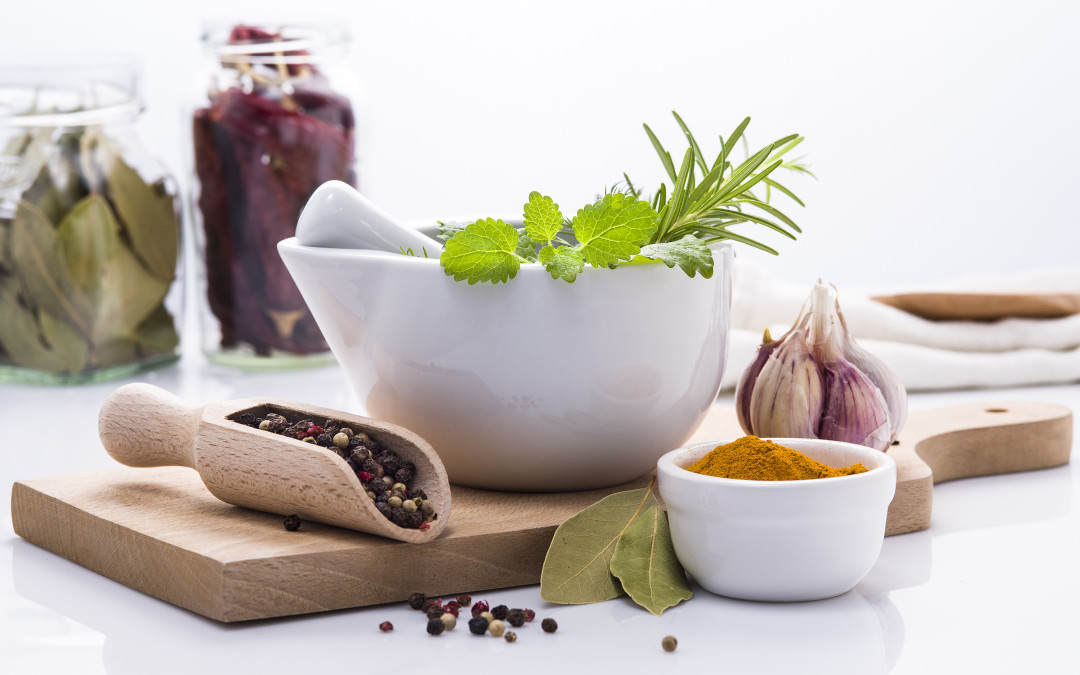
by Caroline | Feb 21, 2016 | Yoga |
Understanding the Healing Power of Ancient Ayurvedic Wisdom
Ayurveda is an ancient Indian philosophy for attaining optimal health and vitality. It combines a focus on foods and herbs that contribute to enhancing physical health, as well as spiritual practices and balanced living.
The word “ayurveda” combines the Sanskrit words ayus meaning “life” and veda meaning “knowledge” or “science” so the word ayurveda means the science or knowledge of life.
Our bodies are designed to self heal, given the proper environment and nutrients. When we take care of our bodies in a balanced and consious way, we become our own healers.
The principles of Ayurveda are practical and applicable to every situation in your life. So don’t be thrown off by the fact that this is an ancient practice and you live in the modern world. There’s a reason it’s been around for so long; it’s just good common sense.
The name of the game in Ayurveda is BALANCE. For example, when you have an imbalance in your body like excess mucus from a sinus infection or chest cold, you would want to take something drying, to balance that excess mucus.
In Ayurveda the body is seen as governed by three doshas or constitutions, based on the elements Earth, Air, Fire, and Water. These doshas exist in all of us in varying degrees, but each person will tend to have more characteristics of one. The idea is to find balance among all three doshas.

Vata
- Governs all movement in the body and comes from the elements of Air (or the energy that governs all biological movement) and Ether (or space). Think of anything that moves in your body, and that’s vata.
- Physical characteristics of a vata type person is very tall or short, with thin frames, easily chilled, bony joints, dry skin, poor muscle development, poor or variable sleep, high energy, sensitive digestion, restless, alert, and have a variable appetite. They are highly agile and have bursts of energy but are quickly fatigued.
- Psychological characeristics of a vata type person are creativity, flexibility, energy, and quick understanding when they are in balance, and fearfulness, anxiety, racing thoughts, flightiness, and poor memory when out of balance.
- Ways vata becomes imbalanced: drinking alcohol or caffene, traveling frequently (or always on the go), eating while on the go, excessive physical activity, excessive sensory stimulation (tv, computers), and eating vata-aggravating foods.
- How to balance Vata: When you feel an excess of vata energy, such as anxiety or restlessness, the way to balance the excessive movement, is with more grounding forces such as a sleep and mealtime routines that stay the same every day, a regular meditaiton practice, eating cooked foods that are warm and hearty, and a grouding yoga practice. Avoid dry, cold, or raw foods and use spices that are warming and grounding such as cardamom, cumin, ginger, cinnamon, salt, cloves, tarragon, thyme, and black pepper.

Pitta
- Governs digestion, metabolism, absorbtion, nutrition, body temperature, and comes from the elements of fire and water. It has qualities such as heat and intensity.
- Physical characteristics of a pitta type person are medium height and build, coppery, yellow or red-ish complection, warm skin, strong digestion/metabolism, sound but short sleep, good appetite, freckle easily, doesn’t tolerate the sun. When out of balance pittas experience heartburn, excessive body heat, rashes, ulcers, inflamation and indigestion.
- Psychological characteristics of a pitta type person are ambition, passion, intelligence, concentration, and good leadership when in balance, but when out of balance can show characteristics such as hate, jealousy, short-temperedness, and anger. Think of a “fiery” personality.
- Ways pitta becomes imbalanced: overheating, being overly competitive, eating while angry, eating pitta-aggravating foods, and over-working.
- How to balance pitta: The way to counter excess fire or heat elements is with something cooling and stabilizing. Eat cooling foods like raw veggies, and avoid sour, hot, or spicy foods. Cooling herbs such as cilantro, cardamom, saffron, and fennel can be incorporated into the diet. Coconut oil massages are also cooling and grounding.

Kapha (pronounced like kahfa)
- Governs the structure of the body, mucus production and immunity, and comes from the elements earth and water. It has qualities such as heavy, slow, oily, and cold.
- Physical characteristics of a kapha type person are well developed bodies, thick skin, good muscle development, fair and bright completion, oily skin. But when out of balance kapha can result in overweight, overly-lethargic/sleepy, fluid retention, depression and allergies.
- Psychological characteristics of kapha are happy, peaceful, calm, forgiving, and loving when in balance, but out of balance it can result in attachment, greed, accumulation, and possessiveness.
- Ways kapha becomes imbalanced: overeating, emotional eating, not engaging in physical activity, spending too much time indoors, avoiding social or intellectual stimulation, focusing too much on money/material wealth.
- How to balance kapha: Since kapha tends to be slow, cool, heavy, and oily in nature, we want to counteract that with more warming, airy and movement oriented elements. Yoga, exercise and other forms of movement and stimulation are great for excess kapha. Vary your daily routine, spend time with interesting and enlivening people. Diet may consist of light fruits and vegetables, and minimal dairy and oils.
Based on what is going on in your life at a given point your dominating doshas might change. They can change from season to season, as well as during different times in one’s life. There’s no one straight formula for what you should eat because your body’s needs are constantly changing. The best thing to do is to be aware of what is going on in your body and mind by noticing when something feels out of balance, determining what factors are causing it (usually excess in one dosha) and taking steps toward balancing it with the ways listed above.
Obviously this is just scratching the surface. Never would I attempt to boil down thousands of years of knowledge into one blog post, but it’s a good place to start, and stay tuned for more on this subject.
Now I want to hear from you!
In the comments below, tell me: Have you ever heard of ayurveda before, and what about it interests you?
XO,

by Caroline | Feb 7, 2016 | Recipes
Here is an easy and delicious dinner with a few simple ingredients that will be perfect for cold winter nights. It’s an updated (and much easier) take on cabbage rolls that I improvised. I only came up with it because I had cabbage and needed to use it up, and I had all of the basic ingredients, but it turned out to be really good! Overall it should take no more than 30 minutes to prepare.It could also be a great alternative to chilli or soup if you’re in the mood for something warm and nourishing but want something that’s a little different. I call it stuffed cabbage stew
Ingredients:
1 lb grass fed ground beef or bison meat
1-2 cups chopped green cabbage (depending on how much you like)
1 small yellow onion chopped
1-2 garlic cloves minced
1 can of diced tomatoes
Cinnamon
Nutmeg
1-2 cups cooked rice (optional)
Directions:
- Chop and sautee cabbage in some oil for 5-10 minutes on medium heat to soften it up.
- Then add in the onions, garlic and meat for another 5-10 minutes until the onions are soft and the meat is cooked.
- Once the meat is cooked add the can of diced tomatoes and stir.
- Spinkle some cinnamon and nutmeg on top and let the mixture simmer for another few minutes then serve either by itself if you want to make it paleo or over rice if that’s your jam.
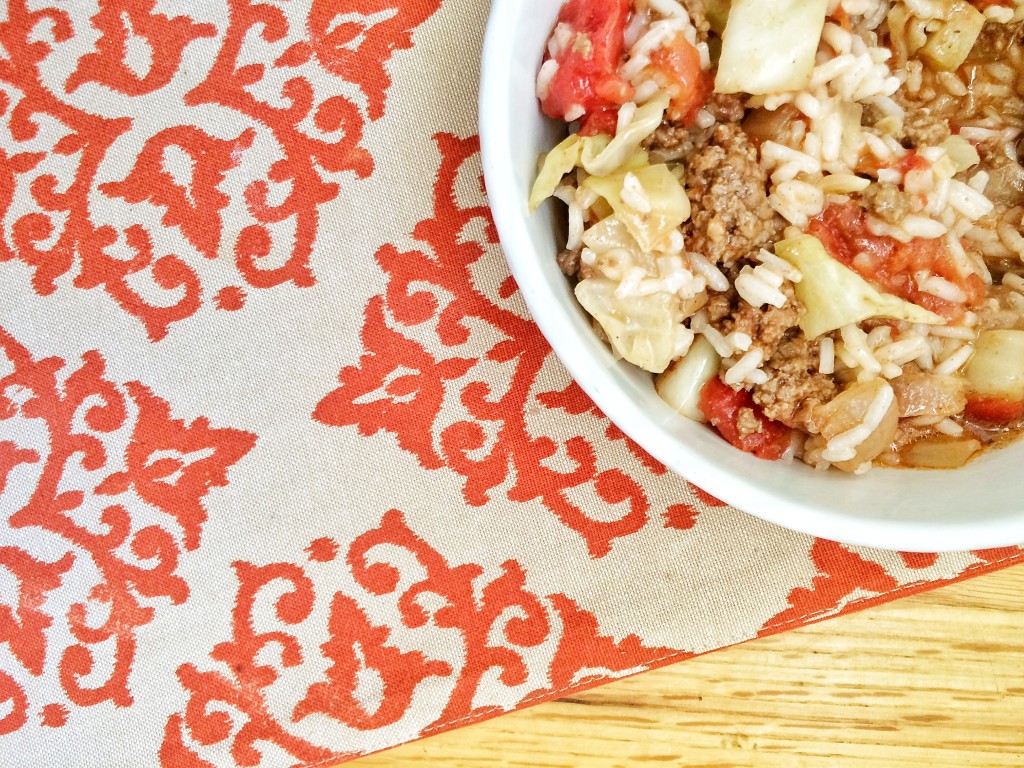

I hope you enjoy this warm and comforting meal!
xo,

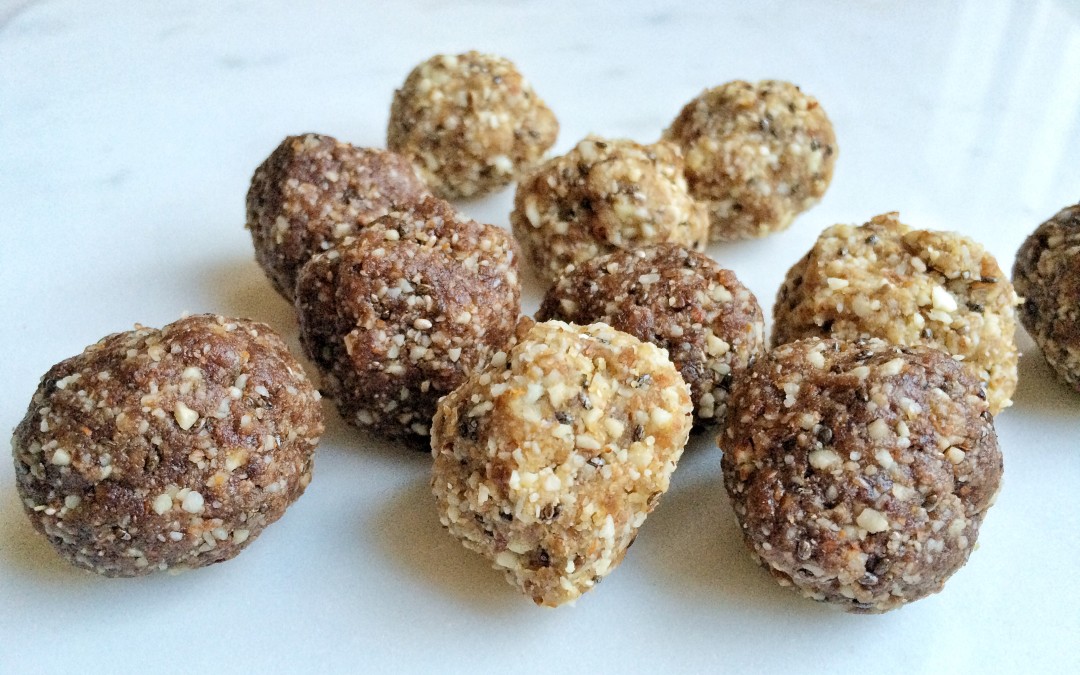
by Caroline | Jan 27, 2016 | Recipes
First off let me say that when I was making these, I was just throwing together ingredients I thought might work together. I wasn’t trying to make anything fancy, or write a blog post about it, but I really wanted to share this one, becuase something unexpected happened. I can’t explain it, but these taste like the little bits of cookie dough you find in cookie dough ice cream. I have NO idea why!
I made these in two varieties: blondies and brownies.
1 cup almonds
10 dates
1 tsp vanilla
2 tbsp maple syrup
2 tbsp maca powder
2 tbsp chia seeds
1/4 cup ground flax
1-2 tbsp unsweetened coco powder
Directions: Mix everything (EXCEPT THE COCO POWDER) in a food processor. I like to mix in the ingredients one at a time so the food processor doesn’t have a conniption. Once all the ingredients are incorporated take out half of the mixture an put it in a bowl (the blondies). Then mix in the coco powder with the mixture that’s still in the processor (the brownies). If the mixture is a little dry you can add 1-2 tsp of water while it’s still in the food processor to make it a little stickier. Once you have your two mixtures roll it into bite size balls and let them cool in the refrigerator for a bit.
These are great to take on the go during the day, or to have after dinner when you’re craving something sweet. I havent tried it yet, but these would be great crumbled on top of vanilla ice cream for a real treat.
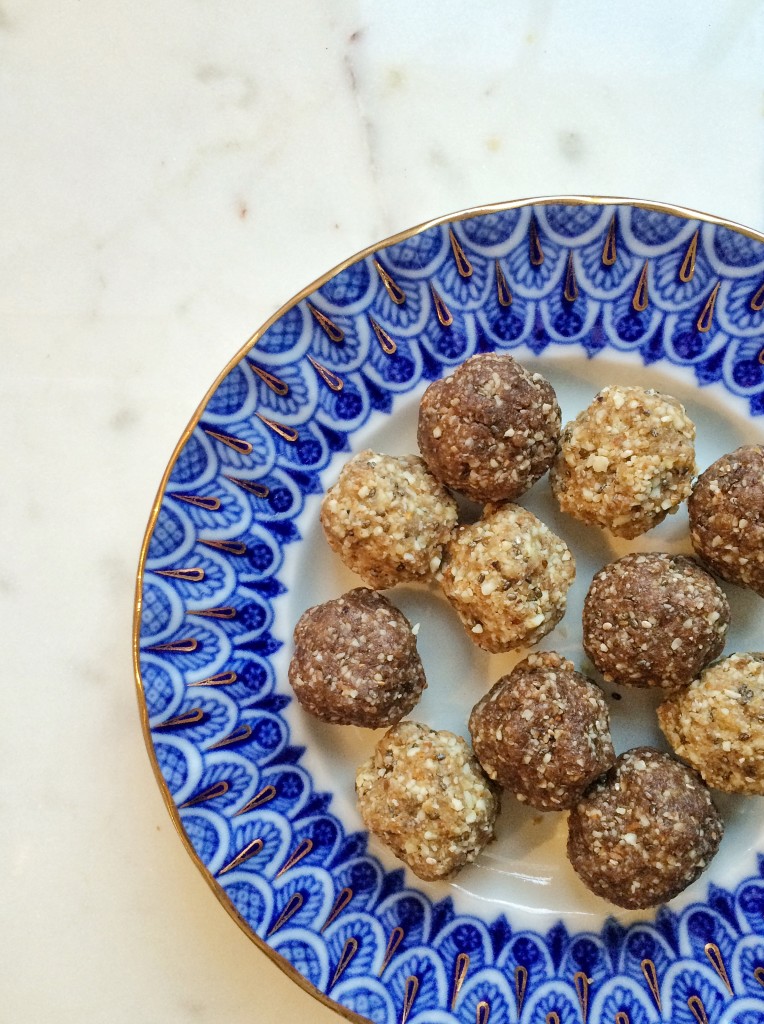
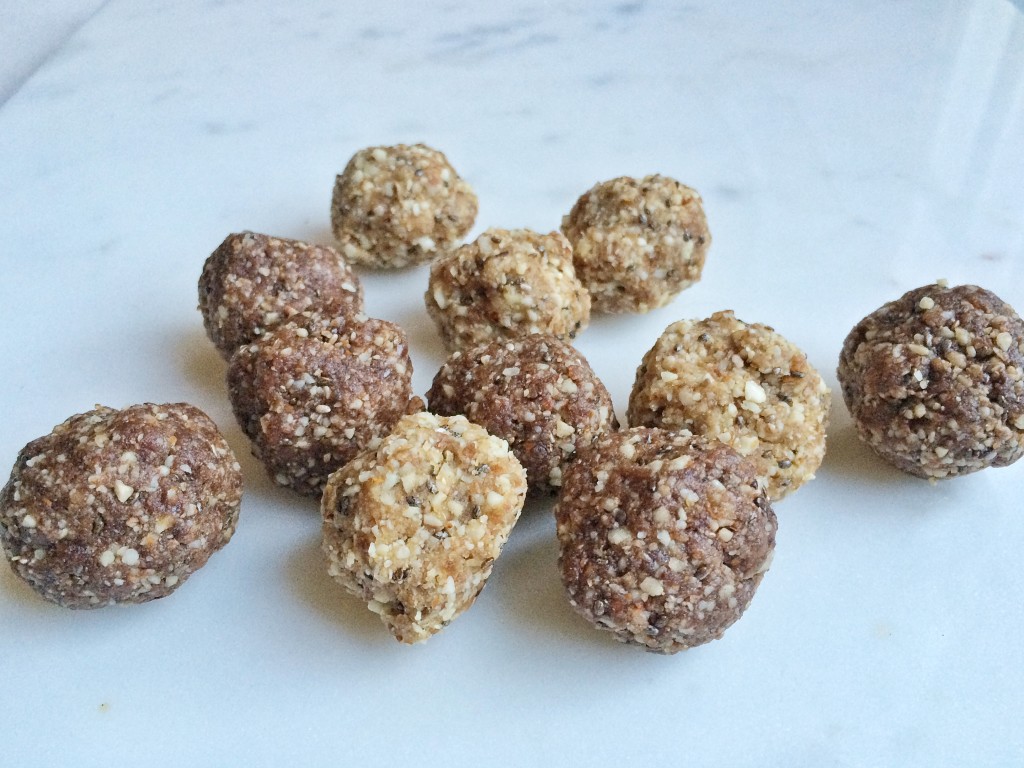
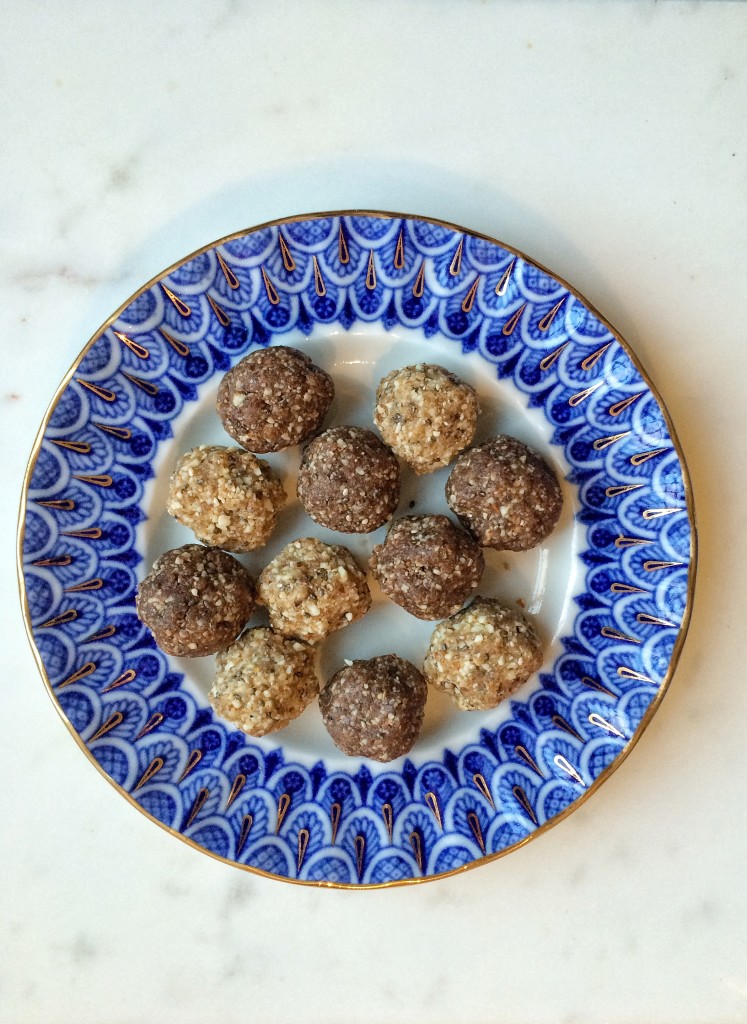
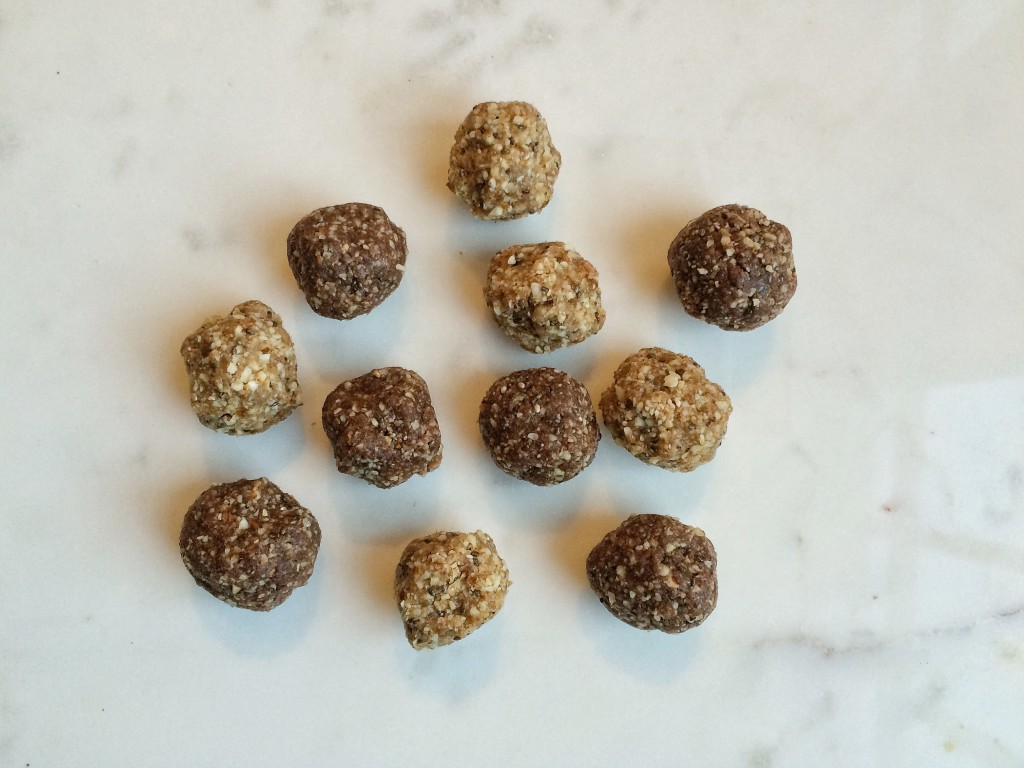
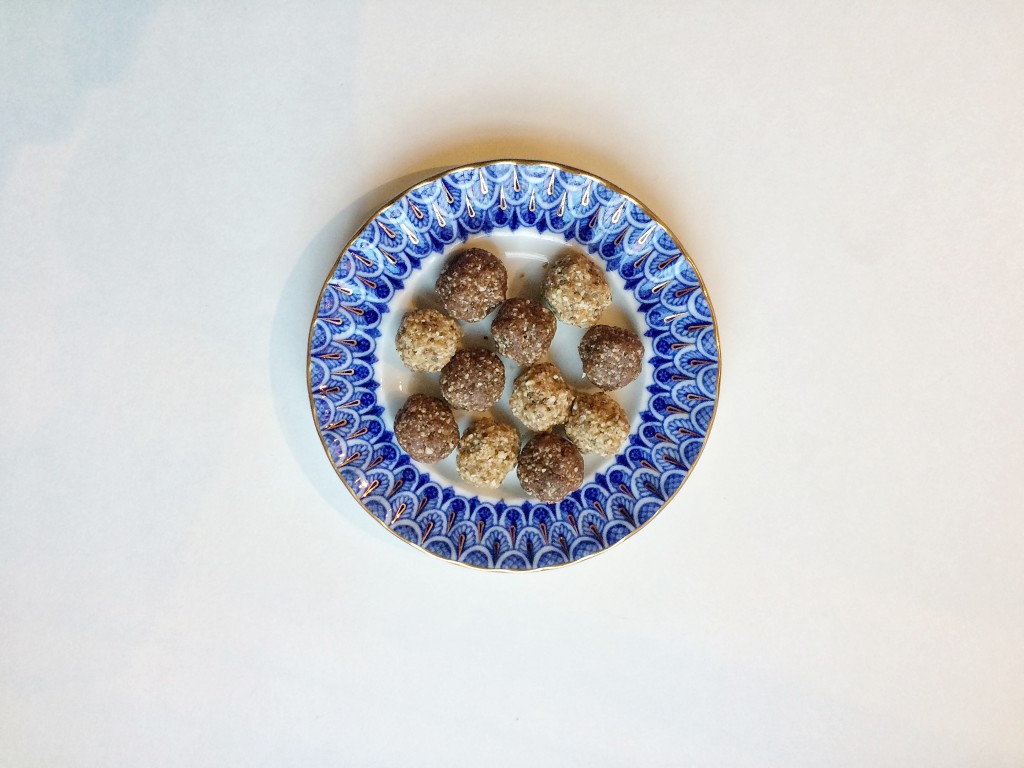
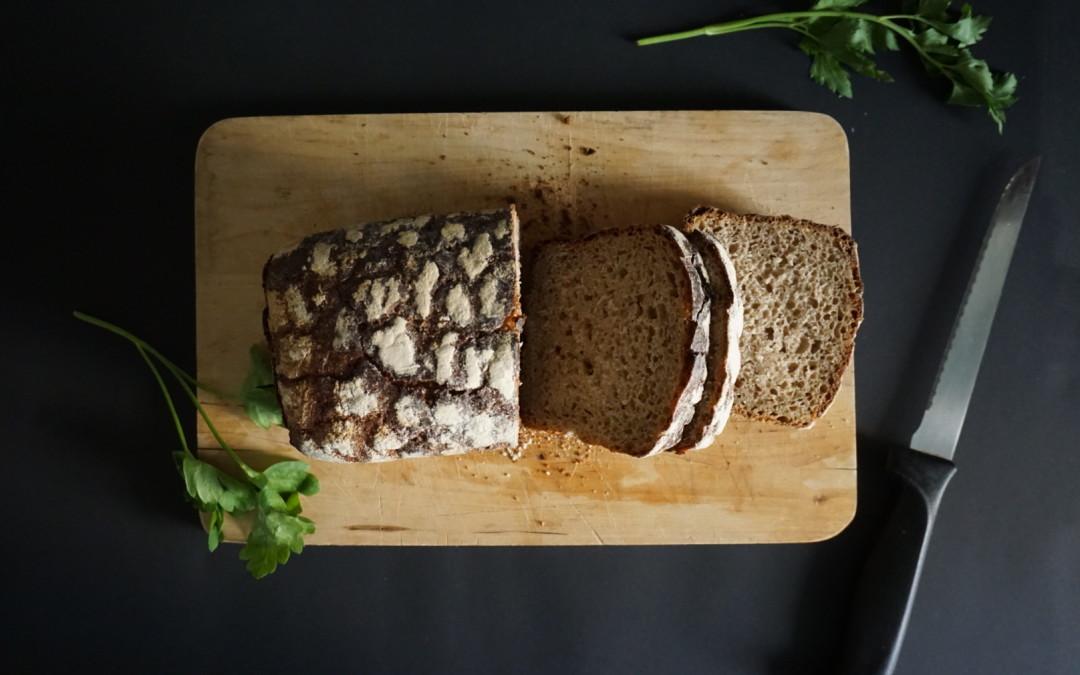
by Caroline | Jan 27, 2016 | Recipes
There’s widespread belief that cutting out wheat is one of the best things you can do for your health. There’s a lot of information out there saying why bread is so bad, but there’s also counters those arguments, and it’s hard to know which is correct.
In doing my own digging for answers I found more sources saying that overall it’s not good for our health, although I also found people saying that the hype is a whole bunch of nothing, and we shouln’t be so quick to demonize a food that’s been a staple for generations.
Here are some of the problems with wheat:
1. Changes in Modern Wheat: This is a controvertial and complicated topic, but here’s the gist: Over the last several decades, wheat in this country has seen significant genetic manipulation because the major food corporations that manufacture wheat have come up with ways of creating and harvesting wheat that are more cost effective and effieient. An example of this is the variety of wheat designed to withstand high amounts of the herbicide Roundup. Roundup is used to kill weeds, but obviously they don’t want it to kill the wheat crop, so they genetically engineered wheat to be resistant to Roundup. No weeds and more wheat to harvest; it’s a win-win right? The problem is that glyphosate (the main ingredient in Roundup) is being linked to all sorts of health problems in the general public. Glyphosate can even be found in the bread that we eat and the water that we drink. However, people can’t seem to agree if glyphosate poses an immediate threat to our health and the environment.
- The WHO declared that glyphosate “probably causes cancer” and have found links to tumors and cancer in animal trials, and damage to human DNA cells after exposure to glyphosate, although there is limited evidence of a carcinogenic link in humans as of yet.
- The wheat industry and Monsanto say that evidence is too thin and that the groups that are finding links between glyphosate use and increased risk of cancer are “cherry picking” their information. They also say that many other everyday items have been deemed by the WHO to be cardinogenic such as cellphones, caffeine and alcohol, and people continue to use those.
I see the value in the arguements on both sides, so like always this should be the individual’s decision.
2. Modern American Diet: We just eat too much bread! We’re brought up thinking that grains and carbs are the biggest part of the food pyramid. Think about our eating habits at mealtimes. Breakfast has customarily centered around things like toast, cereal, bagels, and muffins. Then comes lunch which is usually a sandwich. A snack might consist of crackers, pretzels or chips. Then at dinner it’s traditional to have a basket of bread or rolls at the table, in addition to a rice or pasta that is probably part of your main dish. Since we’re used to things being this way it’s not something we readily question, and so continues the cycle. So, even if the wheat crop is pristine, it’s not doing anything for our health to eat as much of it as we do.
3. Nasty Ingredients: It should only take 4 ingredients to make bread: flour, yeast, water and salt. However, most commercially available grain products in grocery stores like cereals, crackers etc. contain long lists of ingredients such as preservatives, flavorings, chemical dough conditioners, artificial coloring, added sugars, and GMOs. And just becuase these products are deemed safe for consumption that doesn’t mean it’s something you want to be eating in large amounts on a regular basis.
4. Blood Sugar: Wheat, yes even the good “whole wheat” bread, can quickly raise your blood sugar. Whole wheat bread is just whole grains that have been ground up into a flour, so it still contains the nutrients of the whole grains but since it’s in a pulverized, overly processed form it gets absorbed into your blood stream very quickly, causing your blood sugar to spike, then drop, leading to hunger, more eating and weight gain. So don’t be fooled by the label on the bread packaging that sais “whole wheat” or “whole grain” becuase it will still turn into sugar in your body.
A better alternative
While I don’t recommend carb loading on “healthier bread,” I realize it’s hard for people to completely change the way they eat, so healthy swaps are a happy compromise. My personal favorite is sprouted grain. Sprouted grains are whole grains that are soaked in water until it grows a little sprout. During this sprouting process, enzymes are released which break down proteins and carbohydrates, helping make sprouted grain food low glycemic. Also, sprouts have more vitamins, minerals and antioxidants than whole grains and are more easily digested than starchy flour. Because it’s easier to digest, our bodies are more able to absorb the minerals, antioxidants, and vitamin C and vitamin B from the grains.
Check out this list from The Food Babe on commercial breads to avoid, and ones that are not as bad.
Bottom Line: While I’m not in favor of eliminating bread completely, I want to be an educated consumer and know the right kinds to eat and in the right amounts. It’s important to also know what your body can handle. Some people should not eat wheat, and others don’t have to cut it out completely. Everyone has to make their own decisions when it comes to their health, but we are given so much conflicting information it’s hard to sort out what food is going to do harm to your body.
- Know what is in the food you are eating
- Make clean food choices most of the time
- Make exceptions for certain occasions, …because: cake.
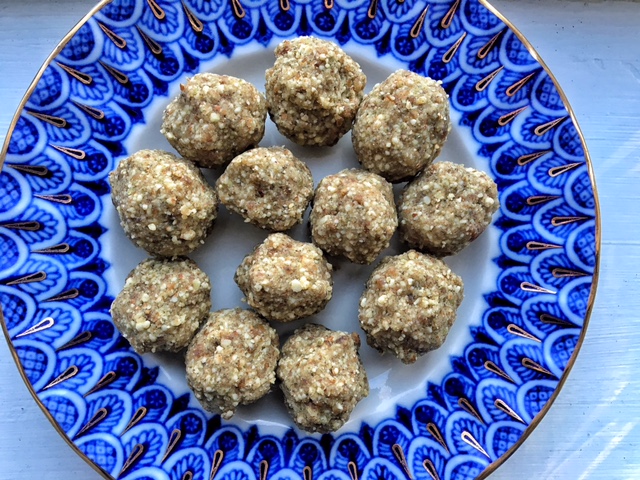
by Caroline | Jan 23, 2016 | Recipes
Ok, I’m just gonna say it… Balls are all the rage right now! (*giggles*) I know how it sounds, but it’s true. Everywhere I look there are recipes for various kinds of superfood balls. I just wish we could come up with a better name, otherwise I’d be shouting from the rooftops “I love balls!” but I people might get the wrong impression, and I’m a classy gal.
But seriously, I’ve spent a lot of time experimenting with different combinations of nuts, seeds, and other superfoods to come up with a healthy snack I can take with me on the go. Most have been pretty good, but this is by far my absolute favorite. This recipe captures the flavors and scents of the season with cardamon, orange and cinnamon, but can be enjoyed any time of year.
What you’ll need:
- 1/3 cup walnuts
- 1/3 cup almonds
- 1/3 cup pumpkin seeds
- 10 dates
- 1/2 tsp cinnamon
- 1/2 tsp cardamom
- 2-4 drops of orange essential oil (theraputic grade). If you don’t have orange essential oil, you could substitute with 1-2 tbsp of orange zest.
- Self Control *This is optional, but I found that I very much needed it when making these!*
Put everything in a food processor until it’s all ground up and evenly mixed. If it seems too dry add a very small amount of water while it mixes. It should be crumbly, and a little sticky.
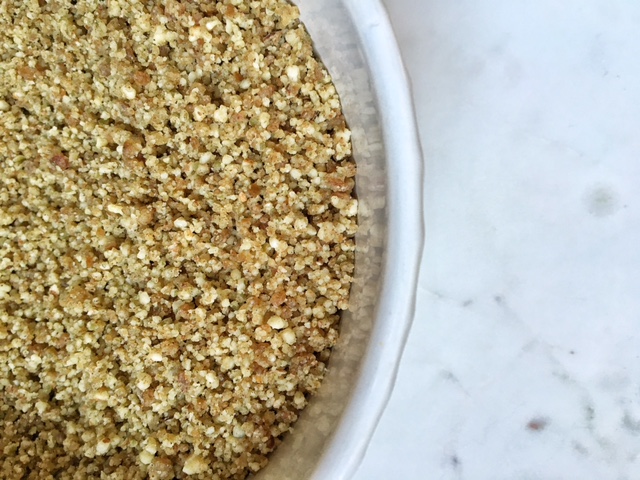
Refrigerate for an hour or two, then roll into bite size balls.
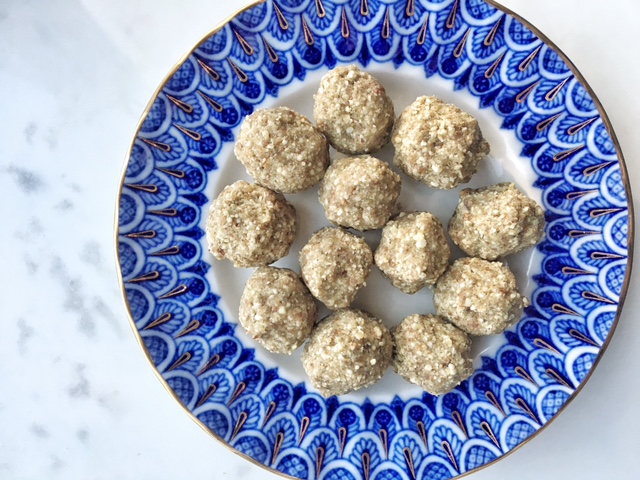
THAT’S IT! Now, how easy was that?
They are to die for!!! I ate like 5 right away, but I had to control myself so I could have it during the week.
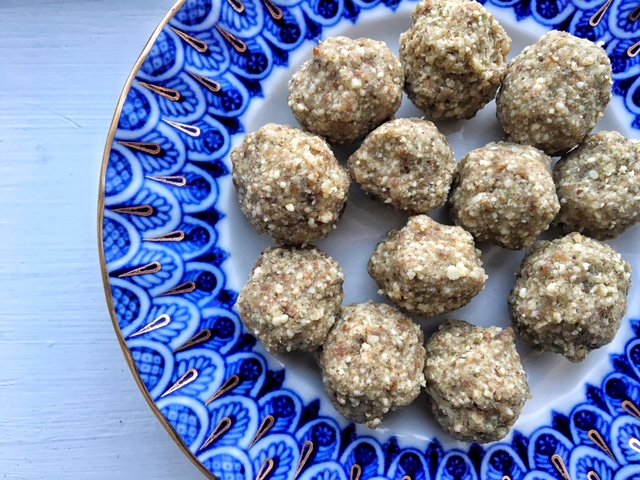
Please let me know in the comments section, what your favorite combinations are!
xo,



















